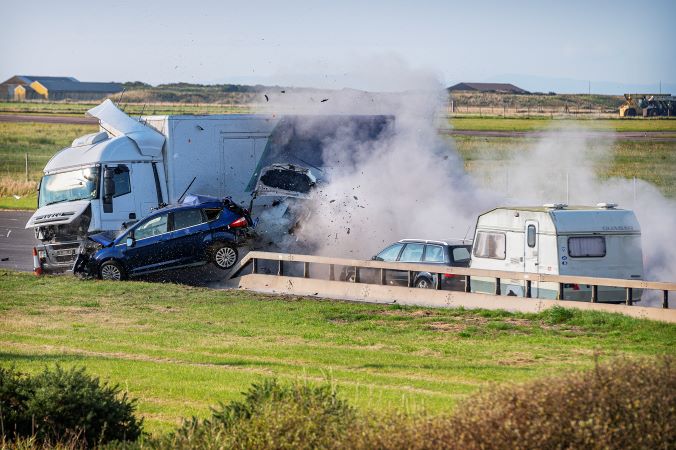The Weekly Reflektion 44/2025
Creating realistic scenarios and carrying out full scale tests, modelling and/or simulations is an important factor in learning. Carrying out scenarios requires clear objectives and detailed planning and preparation. Where the scenario is designed to test human and/or organisational factors then the planning team needs to have relevant competence on human and organisational responses. Full scale testing may also lead to destruction of physical elements and therefore there may be a significant cost. Repetition is not acceptable, so you need to get it right first time.

How do you create worthwhile scenarios for learning?
In 2022, about 75,000 car users were injured on UK roads, and nearly 800 car occupants died. 45% of UK drivers exceed the speed limit on British motorways and 24% of fatal crashes involve speeding drivers. 24% of drivers who die on British roads aren’t wearing seatbelts. Nearly 20% of all fatalities were in crashes involving three or more vehicles, also known as a pile-up. Multi-vehicle accidents are poorly understood, and questions about vehicle safety, driver behaviour, and crash dynamics remain largely unanswered because researchers only ever arrive post-crash. Researchers at Cranfield University decided to design and carry out a full-scale test based on a motorway pile-up scenario. This experiment was designed to allow experts to understand how safety systems fare, how drivers react and why some people survive while others don’t.
In 2025, researchers at Cranfield University carried out a full-scale motorway pile-up test at the former RAF Machrihanish airfield in Scotland. Eight cars and a 30-ton HGV were modified so that they could be driven remotely. There were eight drivers for the cars including four drivers that were members of the public and who were completely unaware of what was going to happen. The scenario was initiated by the HGV crossing in front of the remotely operated cars. Hundreds of hours of planning and preparation and required experts both in vehicle design and safety systems, and in human performance. 94 cameras and other specialized equipment were deployed to determine how the drivers reacted, and the cars performed. Accident professionals investigated the crash without any prior knowledge of the test which gave the opportunity of assessing the accident investigation methods. The crash produced some interesting results that are described on the Cranfield University website.
- Crash forensic investigation is highly accurate. The team managed to pinpoint extraordinary details about the crash, including a freak one in a million occurrence of one car careering under the lorry.
- Crumple zones work – despite a massive rear shunt from a white van, the Prius electric battery remained intact thanks to crumple zones. Others’ lives were saved by them.
- Air bags might not deploy depending on where the vehicle is hit, leading to disastrous consequences.
- Safety systems struggle with multiple impacts – crumple zones and airbags in the Dodge did little after the first or second impact.
- A panicked driver isn’t rational – despite coming to a stop safely, one of the drivers then accelerated into the lorry.
- High driving position enables earlier response to events ahead – as shown by the measured braking of the utility vehicle.
- The hard shoulder is a dangerous place to be – any drivers or passengers in the cars on our hard shoulder would most likely have lost their lives.
The development of the pile-up scenario and the work to test this scenario in a full-scale test provided valuable insight into both vehicle and human performance. There is now a basis for developing measures that will reduce the risk associated with driving on motorways.
